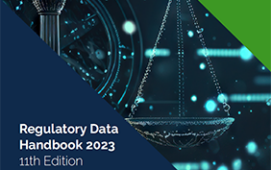Technology cost and performance have characterised the ultra-low latency data space over the past few years, but change is on the horizon as trading firms review technology investment and chase game changing innovation.
The opportunities and challenges of managing ultra-low latency data will be discussed at next week’s A-Team Group Intelligent Trading Summit in London. Jason England, associate partner at Citihub, will lead the conversation during a panel session – It’s not just about speed anymore: Best practices for accessing and managing ultra-low latency data – and will be joined by experts Graeme Burnett, a specialist in high performance computing; Mark Reece, director of professional services at MCO Europe; Donal Byrne, CEO at Corvil; and Stephane Leroy, founder and chief revenue officer at QuantHouse.
Ahead of the Intelligent Trading Summit, we talked to England and Reece to discover some of the hot topics that will be up for debate on the day. England highlighted the cost pressure in banks, coupled to the problem of dealing with technology investments that are coming to the end of life, such as colocation. He says: “When the market moves, you could be in the wrong colo with the wrong technology. It costs millions to move out, which is difficult in a business with wafer thin margins. Where do you go? What do you do?”
Reece noted that the cost premium problem of ultra-low latency connectivity has pretty much receded with firms looking instead at cost of ownership including software licences, servers and people. He adds: “Cost is important, but not as important as it has been. Control has become more important.”
On innovation, England favours the adoption of radio communication technology being developed by the military and likely to be commercialised. He notes the introduction of microwave technology on the UK to Frankfurt route as the last major disruption in the ultra-low latency data market, and says: “Over the past few years, there has been a lack of disruptive innovation and only incremental improvement. Radio communication could provide a 21 millisecond Atlantic crossing against the 33 millisecond crossing provided by fibre. Using radio communication over long distances may be a few years away, but it could be the next disruptor.”
Join this panel session at the Intelligent Trading Summit to find out about:
- Drivers of change
- Technology investment
- Performance
- Innovation
Subscribe to our newsletter




